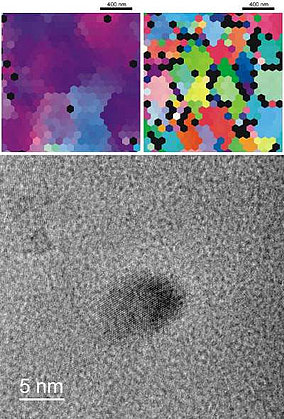Lattice Defects and Phases in Bulk Nanocrystalline Materials with Respect to Processing and Properties
Project coordinator: Univ.-Prof. Dr. M.J. Zehetbauer (University of Vienna)
This project combines the expertise and know-how on nanomaterials and state-of-the-art techniques of two groups of the Faculty of Physics, Vienna University. Our team will focus on two main aims: (i) microstructural characterisation for all network projects, (ii) own research concerning specific features of nanometals processed by Severe Plastic Deformation (SPD).
Aim (i) includes the Multiple Whole X-ray Profile Analysis (MXPA) which allows for a careful separation of size and strain broadening. This way it is capable to yield the crystal domain size as well as the distribution and density of dislocations even in SPD nanostructured materials. The group also offers its expertise in (High Resolution) Transmission Electron Microscopy ((HR)TEM) of nanomaterials, not only with analyses of grain size and –distribution, but also of the detailed structure of grain boundaries. Special expertise exists on HRTEM of nanomartensites. These X-ray and TEM studies will be carried out in cooperation with projects 02, 04-07. Furthermore, the team of University Vienna is well familiar with different techniques of neutron scattering which thus will be applied for characterisation/interpretation of the magnetic nanostructures/properties investigated by projects 06 and 07, and for determination of the pore size needed in project 05.
Aim (ii) demands the physical clarification of special features typical of SPD nanomaterials e.g.: the marked ductility with still enhanced (fatigue) strength, the basic processes responsible for deformation induced grain refinement, and SPD specific phase transitions with emphasis on grain size effects on magnetically induced martensitic transformations. For these issues co-operations with projects 02 (SPD processing, fatigue, fracture thoughness), project 04 (vacancy effects) and project 07 (internal strains) are planned. In addition, the latter issue will be studied in co-work with project 06 which contributes magnetic properties of SPD magnetic shape memory alloys.
c/o Physics of Nanostructured Materials
Faculty of Physics
Universität Wien
Boltzmanngasse 5
A-1090 Vienna
T: +43 1 4277 51302
F: +43 1 4277 51326





